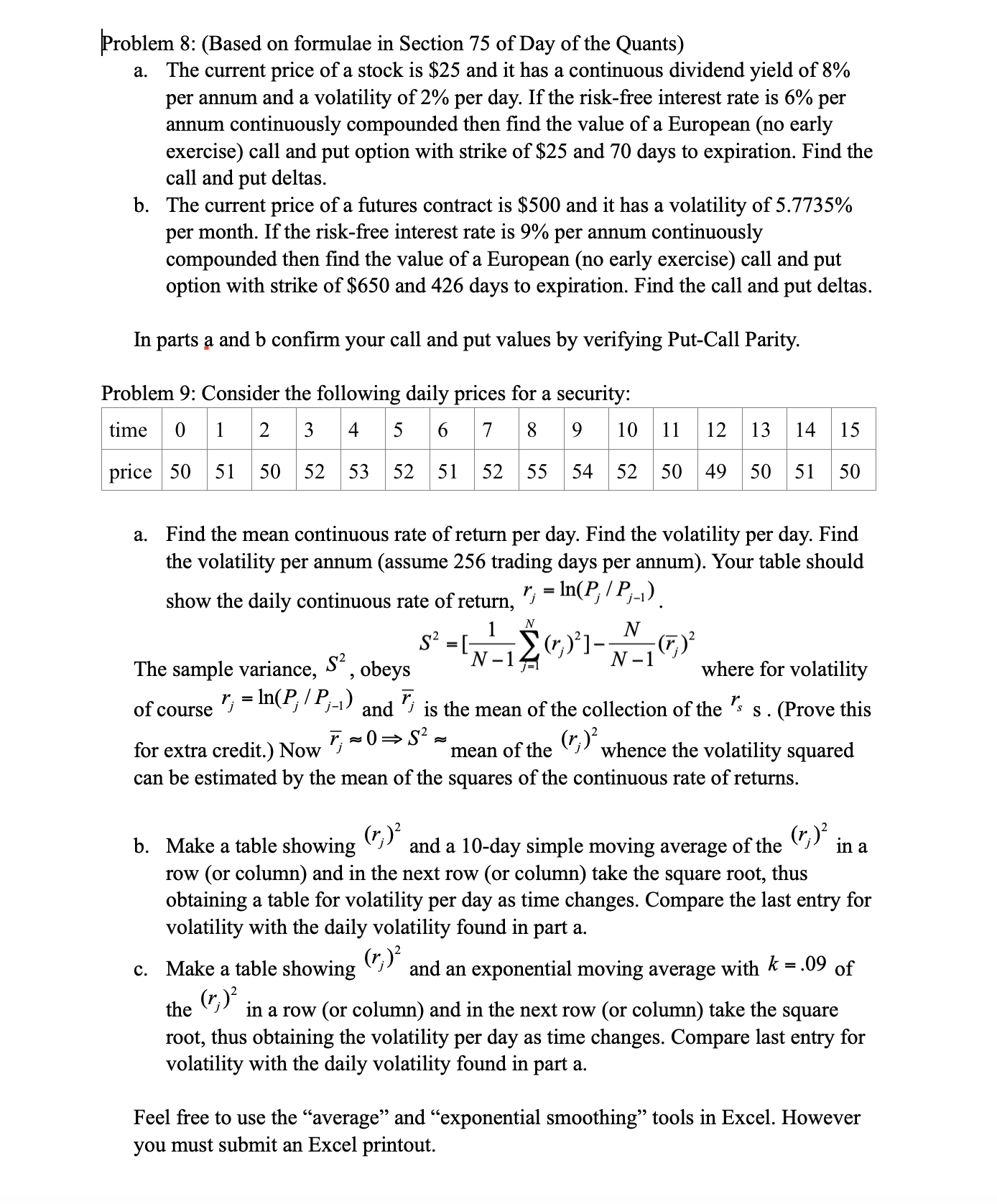
Problem 8: (Based on formulae in Section 75 of Day of the Quants)
1Problem 8: (Based on formulae in Section 75 of Day of the Quants) a. The current price of a stock is $25 and it has a continuous dividend yield of 8% per annum and a volatility of 2% per day. If the risk-free interest rate is 6% per annum continuously compounded then find the value of a European (no early exercise) call and put option with strike of $25 and 70 days to expiration. Find the call and put deltas. b. The current price of a futures contract is $500 and it has a volatility of 5.7735% per month. If the risk-free interest rate is 9% per annum continuously compounded then find the value of a European (no early exercise) call and put option with strike of $650 and 426 days to expiration. Find the call and put deltas. In parts a and b conrm your call and put values by verifying Put-Call Parity. Problem 9: Consider the following daily prices for a security: time 0 1 2 3 4 5 6 7 8 9 10 11 12 13 14 15 price 50 51 50 52 53 52 51 52 55 54 52 50 49 50 51 50 a. Find the mean continuous rate of return per day. Find the volatility per day. Find the volatility per annum (assume 256 trading days per annum). Your table should show the daily continuous rate of return r. ' lr1(P / P __1) S-[ (r, -) ]-_(F -) The sample variance, SE ,obeys ".1112" =1n(P /P-') and]; is the mean of the collection of the rs s . G'I'OVG this 2 2 for extra credit.) Now Ff '3 0 = S "mean of the ('3') whence the volatility squared can be estimated by the mean of the squares of the continuous rate of returns. Where for volatility of course J 2 b. Make a table showing (1} )2 and a 10-day simple moving average of the (1}) in a row (or column) and in the next row (or column) take the square root, thus obtaining a table for volatility per day as time changes. Compare the last entry for volatility with the daily volatility found in part a. c. Make a table showing ('3') and an exponential moving average with k = -09 of the (1}) in a row (or column) and in the next row (or column) take the square root, thus obtaining the volatility per day as time changes. Compare last entry for volatility with the daily volatility found in part a. Feel free to use the "average" and "exponential smoothing" tools in Excel. However you must submit an Excel printout








